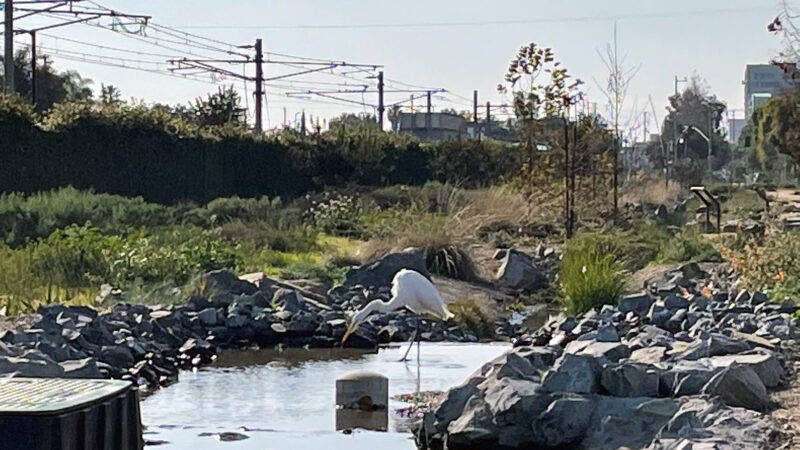Urban expansion in Los Angeles have taken a serious toll on biodiversity and ecosystem health in the region. Streams in particular have been heavily affected; frequently diverted underground to make room for development over time, streams lose the ability to support soils and plants that filter water and remove and clean heavy metals and other pollutants, and are shaded from sunlight that can sanitize bacteria in the water. Stormwater, the runoff that flows over our streets and sidewalks and off roofs and parking lots when it rains, is conveyed by these streams to beaches and the ocean, posing a threat to public health.
Where space can be found to bring streams to the surface – “daylighting” them – some of their stormwater filtration functions can be restored and the streams can begin to support an array of plants and animals again. The Westwood Greenway, located along the E Line light rail in Rancho Park, is an artificial, engineered stream that uses daylighted water pumped from an adjacent storm drain to clean water that will ultimately be discharged to Santa Monica Bay. The Greenway, opened in October 2020, offers an opportunity to develop optimal practices for ecosystem restoration, expansion of local biodiversity, and a return to natural water cycles and processes. Our team is working to assess the condition of the Westwood Greenway and how it is functioning to enhance water quality and the surrounding landscape. We aim to create a framework that can streamline the creation and organization of future greenway projects to promote water restoration and increased access to this kind of unique environment for communities across the city. influencing future investments in multi-benefit water treatment projects that are self-sustainable and cost-effective.
Student Team: Danielle Hoekstra, Cassandra Kays, Cortney Kleczka, Daniela Lopez, Alé Pulido, Lynsea May Southwick, and Claire Villegas
Client: Westwood Greenway, Inc.
Advisor: Edith de Guzman

